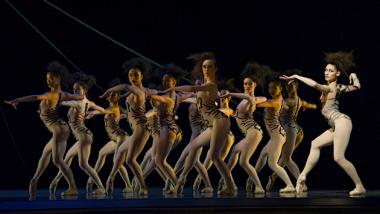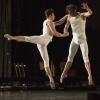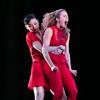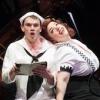
The San Francisco Ballet’s salute to Jerome Robbins (1918–1989), aside from being filled with his marvelous choreographies, casts a shining light on how intertwined are the fortunes of dance and the arts as a whole. For instance: When he visited Iceland, Robbins invited an unknown teenage ballet student named Helgi Tomasson to study ballet in New York City on scholarship. From there, Tomasson joined Robbins and George Balanchine at the New York City Ballet. The rest is history, winding up at S.F. Ballet, where Tomasson is artistic director, and where Robbins: Ballet and Broadway, opened Tuesday night at the War Memorial Opera House.
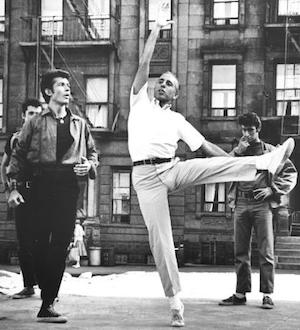
Another coincidence: Robbins and Bernstein were both born in 1918; both worked in New York City. Robbins studied dance and joined Ballet Theatre, forerunner of American Ballet Theatre. Bernstein was an assistant conductor of the New York Philharmonic (where he would soon become a living legend after stupendously filling in for a sick conductor) when Jerome Robbins commissioned him to compose the music for Fancy Free, Robbins’s first work for Ballet Theatre, which premiered April 18, 1944. (Robbins played one of the three sailors.) He and Bernstein, whose centenary is also being celebrated this year, would collaborate on two more ballets, Facsimile and Dybbuk. But perhaps more importantly to lovers of American musical theater, they expanded Fancy Free into On the Town and, in 1957, were the key creators (along with Shakespeare) of West Side Story.
Fancy Free joined the SFB repertory in 2007. Tuesday night its three sailors were Benjamin Freemantle, Esteban Hernandez, and Lonnie Weeks.
But wait, there’s more! When Robbins choreographed the shockingly sexual The Cage, about insects and female predation in 1951, he used Igor Stravinsky’s brief and harrowing Concerto in D for String Orchestra. Stravinsky was an early-on collaborator with Balanchine (The Prodigal Son and Apollo), whose young City Ballet Robbins was to join in 1949. There is no way anyone can view The Cage without being reminded of Rite of Spring, choreographed by Vaslav Nijinsky in 1913 to Stravinsky’s eponymous score that, with the likely assistance of impresario Serge Diaghilev, started a riot at its Paris premiere.
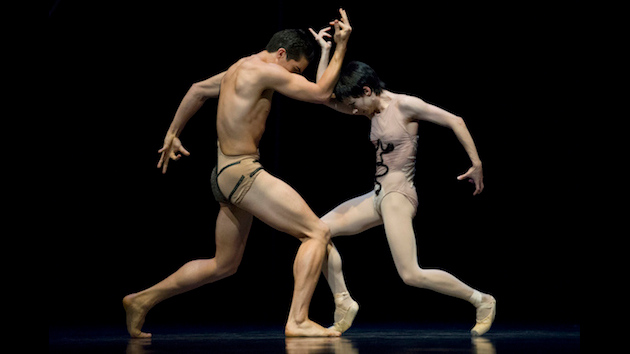
With its trembling Chosen One, an initiate and a female sacrifice, Rite is a reversal on The Cage. The Novice (Maria Kochetkova), a young insect with a (shades of Giselle, from 1846!) veil on her head, learns from the Queen (Sofiane Sylve) to mercilessly devour the male Intruders, danced by Lonnie Weeks and Steven Morse.
Robbins would stay at the City Ballet for 49 years, beginning as a dancer and associate artistic director, and ending his career after Balanchine’s death, when he shared the unwieldy title assistant balletmaster-in-chief with the now-departed Peter Martins. In the 1970s, Robbins choreographed Other Dances (1976; SFB premiere 2006), a piano duet shared Tuesday night by Frances Chung and Angelo Greco, and Opus 19/The Dreamer (1979; SFB premiere 1986), with Carlo di Lanno in the title role, dancing with Sarah Van Patten.
If we were to start delving into the designers for Tuesday night’s program, their historical impact and the legends, living and gone, behind some of them, we’d be here well into the upcoming San Francisco Ballet Unbound Festival, which you don’t want to miss. So let’s just salute a few:
-
Jean Rosenthal’s gorgeous blue and red net sculpture, practically a member of the cast as it menaces overhead, for The Cage, all-engulfing when it drops.
-
Ruth Sobotka, triple-threat dancer, designer and actor, who created the sleek, sexy, scary costumes for The Cage. Fun fact: She was married to director Stanley Kubrick.
-
Scenic designer Oliver Smith, co-director of ABT, whose stunning, acutely angled set for Fancy Free is easy to fancy sliding off the stage. And who knew that Fancy Free costume designer Kermit Love was also the builder of Jim Henson’s beloved Sesame Street cast, from Oscar to Big Bird to Mr. Snuffleupagus? (I did know; I visited Love’s New York workroom once and got to touch Big Bird’s feathers.)
-
Much-honored Santo Loquasto, costume designer, and Jennifer Tipton, lighting designer, both still very much working. On everything.
Tuesday night’s ballets evidenced the great care taken to present the work as Jerome Robbins and his collaborators intended.
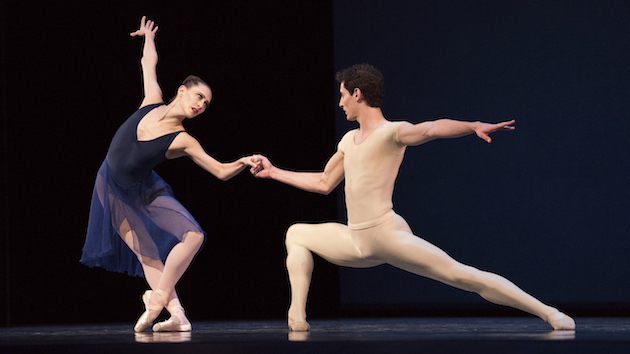
Everything was played live by the San Francisco Ballet orchestra, led by Martin West, with violinist Cordula Merks investing Prokofiev’s solos in Opus 19/The Dreamer with a special glow.
In Dreamer, di Lanno, a brilliant technician with a masterly theatricality, epitomized isolation and apprehension, hope, and disappointment. His form, limned in pallor by Tipton, in contrast to the warmer tones for the rest of the cast, acutely conveyed control, surrender, and release. His partner, Van Patten, in glorious deep blue, epitomized the heaven the Dreamer sought as she floated toward him, then moved just out of his reach. The corps of a dozen men and women intensified the lead couple’s every move, helping to draw things toward a hopeful conclusion.
As the Novice in The Cage, Maria Kochetkova began small; she is petite. But she seemingly grew huge and menacing via the coaching and aggression of Sylve’s domineering (and yes, Myrtha-like) Queen. Kochetkova is the mistress of all gestures she surveys, from rubbing her hands together to denote claw-like palps to mounting her two victims, systematically plunging her hands into their torsos, flipping them over and, in a horrifying moment, kicking one victim in the head. Weeks and Morse were fine to watch in their journey from self-confident manliness to hollowed-out carapaces of their former selves. Brrrr.
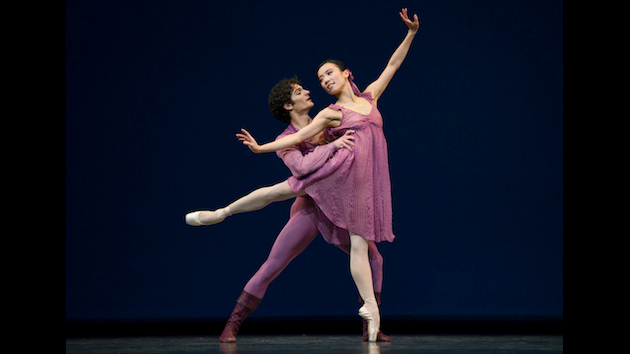
Other Dances, its Chopin played onstage by pianist Natal’ya Feygina, put intensity on vacation with its soothing calmness, playful interludes, and grandly intimate interpretations of folk-based mazurkas and waltzes. Frances Chung, gently flirtatious yet strong and focused, leaped and drifted with her partner, Angelo Greco, as well as in her solos. His tidy solos of impressive spins and grand jetés gave way to charming pas de deux — particularly sweet as Chung rested on one elbow, body extended straight out as if she were on a sofa — were born of affection and beautifully reciprocated by Chung’s warmth.
The magical Fancy Free is so funny yet says so much. On shore leave, three young men and their female quarry find, in a wartime barroom, shelter and laughter in a world turned upside down. More than any of the other ballets, Fancy Free — embodies the multiplicity, the complexity of Jerome Robbins. He was a genius; a craftsman of a choreographer, an immigrant son trying to find his own place in the world, a passionate lover of music, possibilities, and risk taking, a master of comedy and disaster — and of making everything and everybody work together. The performances of Benjamin Freemantle, Esteban Hernandez, and Lonnie Weeks, with Dores Andre, Sasha de Sola, and Maggie Weirich, were fluent, thrilling, and cause for celebration.
Correction: The original version of this article stated that the music of Other Dances is by Mozart. In fact, the music is by Chopin.

